

It’s been a rough couple of months for the Mac App Store. Back in November, many applications purchased through the store stopped loading because of an expired security certificate – an embarrassing bug to say the least.
Then, in December, Behemian Coding pulled their professional design app Sketch from the store, saying that the platform just isn’t workable for them. No one issue was a deal-breaker, they explained, but a number of small issues added up.
“App Review continues to take at least a week, there are technical limitations imposed by the Mac App Store guidelines (sandboxing and so on) that limit some of the features we want to bring to Sketch, and upgrade pricing remains unavailable,” the company said in a blog post.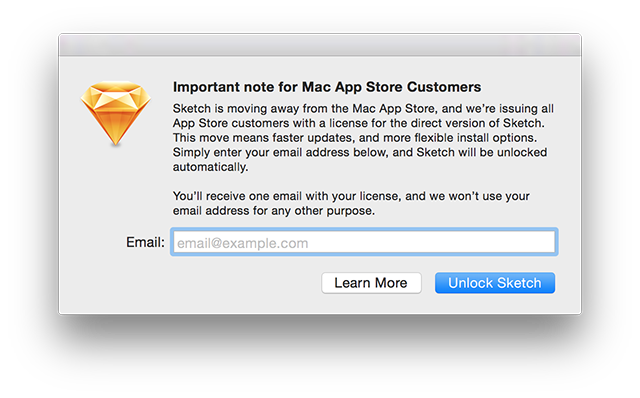
As prominent Apple blogger John Gruber pointed out, Sketch was among the top-grossing apps in the Store and a winner of design awards handed out by Apple. Sketch was a poster child for Apple’s App Store ecosystem, and they pulled out of it.
“The Mac App Store is rotting, at least for productivity software,” wrote Gruber. “There’s no other way to put it. ”
Is this feeling common among Mac developers? We decided to talk to a few and find out.
“It’s a joke that they have barely updated the Mac App Store in five years, have made little effort to improve certain limitations like sandboxing, ignore it for new features like app analytics, and continue to take 30 per cent.” — Scott Kyle, Developer, Current
Scott Kyle released Current, a Facebook client for Mac on the Mac App Store in 2014. The app makes it possible to, among other things, chat with your Facebook buddies in separate windows.
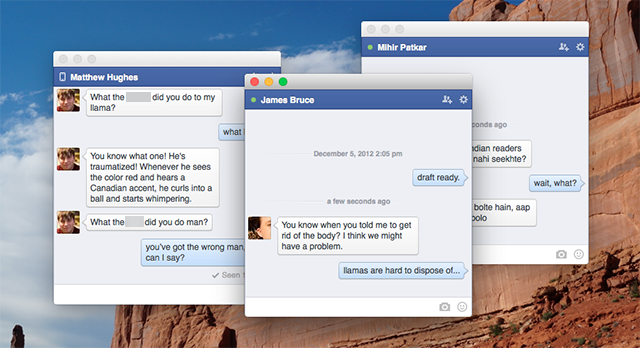
But Current almost didn’t make it to the platform.
“There was a bug that kept my account in a stuck state, where I couldn’t actually launch the app on the store,” Kyle told us. “It was insanely frustrating because I had it approved by app review and some press lined up, and they were extremely unhelpful on the phone.”
Ultimately, Kyle only solved the issue by calling people he knew inside Apple.
“I’m really not sure what would have transpired if I had not had the connection on the inside,” he told us.
Imagine you’re a developer, ready to share what you made with the world, only to be held up because of a technical glitch. Would you be frustrated?
But not all developers are unhappy with the App Store. Brian Mueller, for example, brought his snarky weather robot CARROT to the Mac App Store after it finding success on the iPhone. It worked out for him.
“The Mac App Store has been very good for me,” Mueller told us. “Revenue from the Mac app at launch was much better than I anticipated (also leading to a large number of sales of the iOS app), and six months after launch the numbers are still very good.”
Now, Mueller had a few things going for him. While there were a few Mac weather apps available on the Mac prior to his launch, none had the polish or personality of CARROT. And Apple prominently displayed CARROT Weather on the front page of the Mac App Store for weeks, which almost certainly gave him a boost. It’s probably also worth noting that Mueller comes from the iOS platform, where the option to go-it-yourself simply doesn’t exist.
But none of that negates the fact that, for Mueller, the Mac App Store was a net positive.
“I never really considered selling the Mac app directly, 1) because the app makes use of several iCloud features that require the app be distributed through the MAS, and 2) it’s just so much easier selling through the MAS — you don’t have to worry about setting up your own store, handling the transactions, etc, all of which I’d have to figure out from scratch since I have no prior experience with any of that.” — Brian Mueller, Developer, CARROT Weather
Of course, using or not using the Mac App Store is not an all-or-nothing proposition. Some apps sell both directly from the developer and through Apple’s platform.
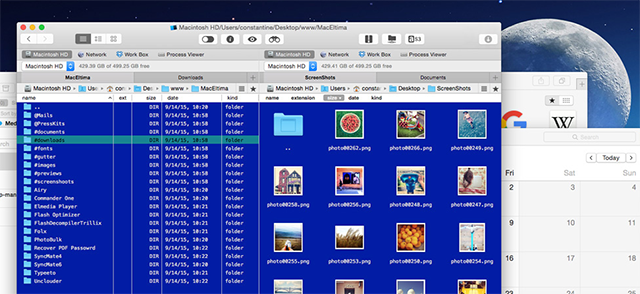
Commander One, for example, is an advanced replacement for the Finder. You can get it from the Mac App Store, or you can buy it directly from developers Eltima.
“Commander One in the App Store is a separate edition of the product, with its own set of features, versions and prices,” a company representative explained. “It is more limited, comparing to the version from our web-site, due to Apple sandbox restrictions.”
Sandboxing refers to the restrictions placed on app in the Mac App Store — they aren’t permitted to access or edit system files. Occasionally a Mac App Store customer will write to Eltima, complaining about such a shortcoming.
“If a user will be confused and buy not the version he wanted by mistake, we will provide him with the needed version,” the company told us.
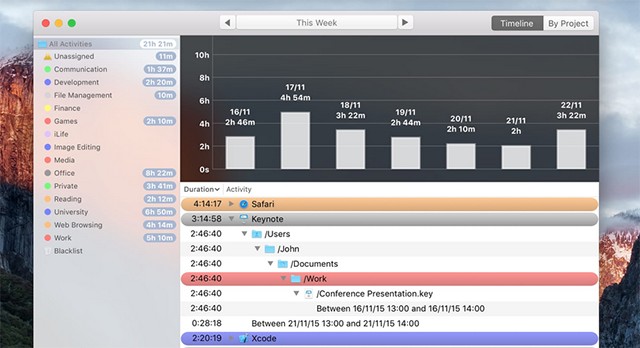
Another developer who distributes applications both inside and outside the Mac App Store is Daneil Alm, developer of Timing for Mac ($25) and PocketCAS ($25). He told us part of the equation is economies of scale.
“I think it becomes much easier outside the Mac App Store the higher your unit price is,” Alm told us. “Higher prices warrant more expensive customer acquisition and they indicate a stronger desire of the customer to want your app so much that they look for it, find it and buy it from outside the Mac App Store. You just don’t have that desire for ‘smaller’ apps.”
True to form, Alm’s more expensive Timing app is sold outside the store while PocketCAS isn’t.
The App Store hasn’t changed much since it launched in 2011. Old screenshots look essentially identical to what we have now.

I get the sense, talking to dissatisfied developers, that they wish the App Store was better. That Apple would pay more attention to it. Sometimes people seemed downright baffled at the neglect.
Alm, for example, explained that Apple has a program for developers where they can offer software discounts to people inside the company. The problem: it’s not possible to offers discounts on the Mac App Store.
“So if you want to offer discounts to Apple employees, you need to do so out of the Mac App Store,” he told us. “Which kind of encourages you to leave the Mac App Store even more.”
That’s right: Apple’s own employee discount program doesn’t work through their store. If that’s true, it’s hard to imagine the company making things developers keep asking for – like upgrade pricing, analytical data, or even trial version – inside the store.
Heck, even we’ve advised users to avoid buying games from the Mac App Store, because of the lack of cross-platform support. This in spite of the considerable advantages offered by the App Store. For example: Gatekeeper, a security feature of OS X, by default blocks all apps that aren’t from the Mac App Store. This means users need enough technical knowledge to disable this setting before they can get any software from outside the store running. Despite this, developers keep going their own way.
If this is going to change, Apple needs to give some attention to the Mac App Store. Apple Vice President Phil Schiller recently took over the project, and I’m sure developers are hoping for change.
Do you buy software from the Mac App Store? Why? Why not? Let us know what you think in the comments, below!
Image Credit: abandoned house by Melinda Fawver via Shutterstock




 Transformers Devastation How to unlock Wheeljack and Grimlock
Transformers Devastation How to unlock Wheeljack and Grimlock How To Change GamePad Sensitivity In The Witcher 3: Wild Hunt
How To Change GamePad Sensitivity In The Witcher 3: Wild Hunt Gold Medal For Legal Trouble Mission GTA V
Gold Medal For Legal Trouble Mission GTA V Star Wars Battlefront Beta - How to Rank up Quickly and Teamplay
Star Wars Battlefront Beta - How to Rank up Quickly and Teamplay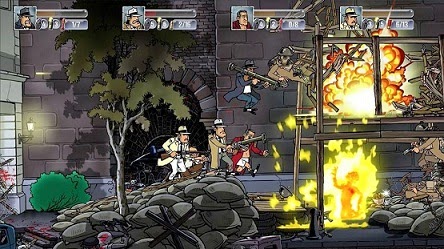 Guns, Gore & Cannoli (PC) review
Guns, Gore & Cannoli (PC) review